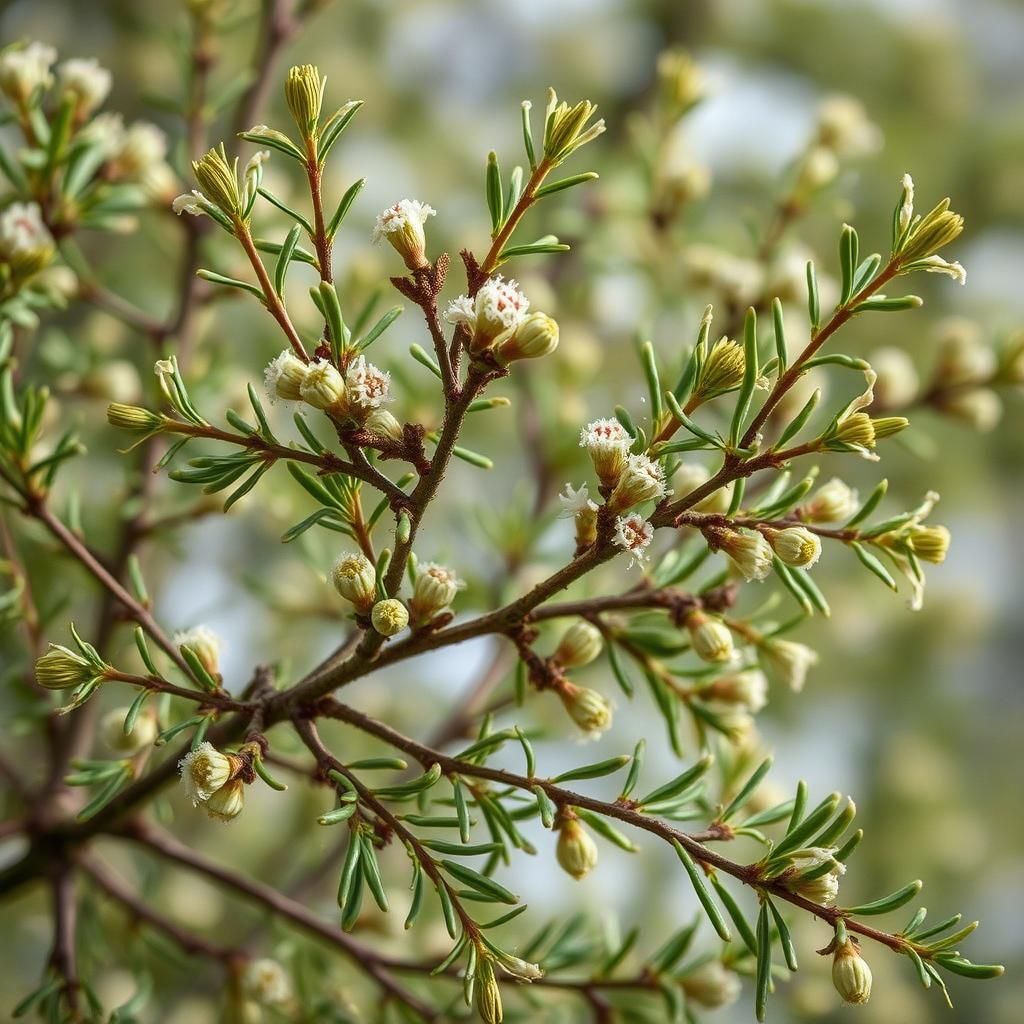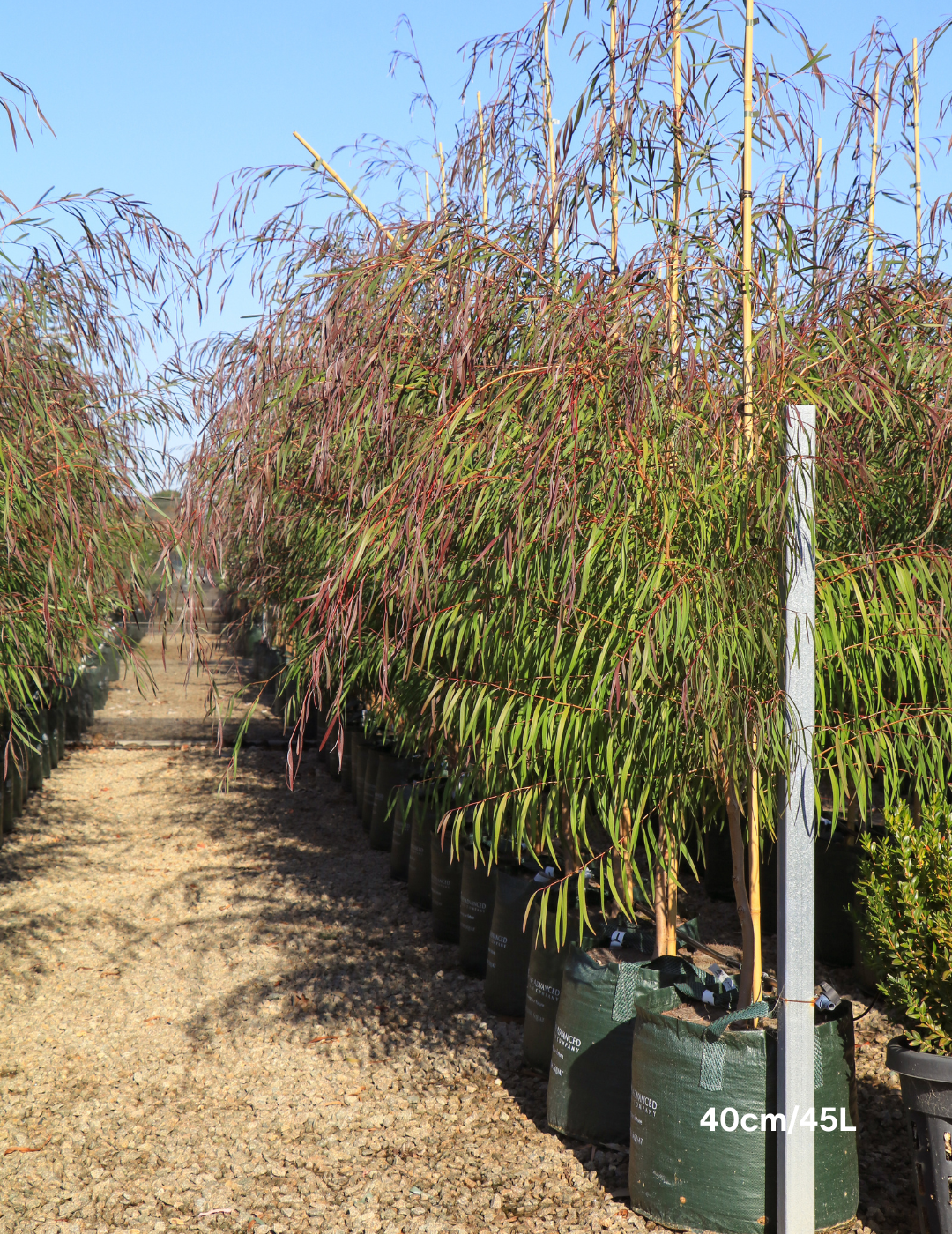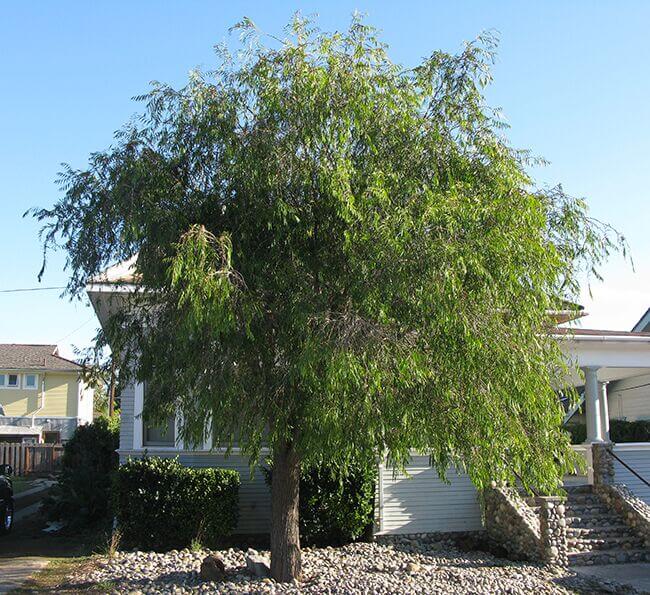Discover the Unique Characteristics and Benefits of Agonis Flexuosa - Willow Myrtle

Agonis flexuosa, commonly known as Willow Myrtle, is a striking evergreen tree native to Australia, celebrated for its unique characteristics and numerous benefits. This species is renowned for its graceful, weeping branches and aromatic foliage, which can elevate any landscape while providing essential habitat for local wildlife. Beyond its aesthetic appeal, Willow Myrtle has long been valued for its essential oils and potential therapeutic properties, making it a versatile addition to both gardens and natural health practices. In this article, we will explore the remarkable features of Agonis flexuosa and uncover the various advantages it offers for both gardeners and ecologists alike.
Understanding Agonis Flexuosa: The Willow Myrtle
Agonis flexuosa, commonly known as Willow Myrtle, is a stunning evergreen tree native to Australia, particularly thriving in the southwestern region of the country. This species is part of the Myrtaceae family, characterized by its graceful, willow-like branches and lush, aromatic foliage. The leaves of Agonis flexuosa are narrow and elongated, often lending a beautiful weeping appearance that enhances its aesthetic appeal in both residential and commercial landscapes. Furthermore, the tree produces small, white flowers that are quite fragrant, attracting various pollinators and contributing to the biodiversity of its habitat. Due to its adaptability to different soil types and varying climatic conditions, Willow Myrtle is increasingly used in horticulture, especially in urban settings for its ornamental qualities and environmental benefits.
Botanical Classification
Agonis flexuosa belongs to the Myrtaceae family, which includes several other notable plants. This classification positions it alongside well-known genera such as Eucalyptus and Melaleuca. The scientific name reflects the plant's unique characteristics, with Agonis derived from the Greek word for struggle, an allusion to the plant's ability to thrive in challenging environmental conditions, while flexuosa highlights the flexibility of its branches. Understanding its botanical classification helps appreciate the ecological role it plays within its native ecosystem.
Growth Habits and Size
Typically, Willow Myrtle can grow up to 15 meters in height, although it is often seen at a smaller scale when cultivated for landscaping purposes. The tree has a broad crown and a weeping form, which can create an elegant focal point in gardens and parks. The growth rate may vary depending on environmental conditions; however, under ideal circumstances, it can reach maturity in a relatively short time. Its ability to adapt to various conditions allows it to flourish in different settings, making it a favorable choice for arid and urban landscapes.
Cultural Significance
In addition to its ornamental function, Agonis flexuosa holds cultural significance among Indigenous Australian communities. The tree has been utilized for various purposes, including traditional medicine and crafting. Its leaves have been used in ceremonial practices, demonstrating the tree's importance in local heritage and the deep connection between people and nature. The sustainable use of this plant highlights the balance of ecological stewardship and cultural preservation.
Environmental Benefits
Willow Myrtle plays a vital role in promoting biodiversity within its native habitat. The flowers of Agonis flexuosa attract a wide range of pollinators, including bees and butterflies, contributing to the pollination of surrounding flora. Additionally, this tree can help improve air quality by absorbing pollutants and providing shade that mitigates urban heat. Its ability to retain moisture in the soil further enhances its environmental benefits, making it a valuable addition to urban forestry and landscaping projects.
Cultivation and Care
Cultivating Agonis flexuosa is relatively straightforward, as the tree is tolerant of various soil types and conditions. For optimal growth, it prefers well-draining soils and full sunlight but can also thrive in partial shade. Regular pruning can promote healthy growth and maintain its attractive form, while occasional fertilization can enhance its vitality. It is important to monitor for pests and diseases, though they are relatively uncommon in healthy specimens. Understanding these cultivation requirements ensures that Willow Myrtle remains a vibrant part of any landscape.
| Characteristic | Detail |
|---|---|
| Common Name | Willow Myrtle |
| Height | Up to 15 meters |
| Family | Myrtaceae |
| Origin | Australia |
| Ecological Role | Pollinator attraction and air quality improvement |
How big do Agonis burgundy willow myrtles get?

Agonis burgundy willow myrtles, commonly known as the burgundy myrtle or willow, typically reach an overall height of about 15 to 25 feet (approximately 4.5 to 7.5 meters) when fully mature. The growth pattern can vary based on the environmental conditions, care given, and specific cultivars. These trees have a spread that can be nearly as wide as their height, often ranging from 10 to 20 feet (about 3 to 6 meters), which provides them with a bushy appearance.
In terms of growth rate, Agonis species tend to be relatively fast-growing, especially when planted in optimal conditions that include well-draining soil and sufficient sunlight.
Growth Characteristics
The growth characteristics of Agonis burgundy willow myrtles are significant factors to consider for landscaping purposes.
- Height: Mature trees typically achieve a height of 15 to 25 feet.
- Spread: A wide canopy that can reach 10 to 20 feet.
- Growth Rate: Often categorized as fast-growing, particularly in favorable environments.
Environmental Preferences
Agonis burgundy willow myrtles thrive under specific environmental conditions, which influence their ultimate size.
- Sunlight: Prefers full sun exposure for optimal growth and vibrancy.
- Soil: Grows well in well-draining, sandy, or loamy soil, avoiding poorly drained areas.
- Watering: Requires moderate watering, as excessive moisture can lead to root issues.
Care and Maintenance
Proper care can enhance the size and health of Agonis burgundy willow myrtles, making it essential for landscaping.
See also:
- Pruning: Regular pruning encourages bushiness and removes any dead or weak branches.
- Fertilization: Use balanced fertilizers during the growing season to promote healthy growth.
- Pest Management: Monitor for pests and diseases that could hinder growth or damage the tree.
Hardiness and Adaptability
Understanding the hardiness and adaptability of Agonis burgundy willow myrtles helps in selecting planting locations.
- Climate Tolerance: Adaptable to a range of climates but prefers mild conditions.
- Drought Resistance: Once established, these trees show good drought resistance.
- Urban Environment: Suitable for urban settings where space is a consideration.
Landscaping Uses
Agonis burgundy willow myrtles are often used in various landscaping designs, making them versatile.
- Shade Trees: Provides ample shade due to its broad canopy.
- Ornamental Use: Valued for their striking burgundy foliage and appealing shape.
- Privacy Screens: Can be used effectively as a natural privacy screen or hedge.
Is agonis flexuosa evergreen?

Agonis flexuosa, commonly known as the wavy-leaved or peppermint tree, is indeed considered an evergreen species. This means that it retains its foliage year-round, providing continual visual interest throughout the changing seasons. The evergreen nature of Agonis flexuosa makes it a preferred choice for landscaping in various climates, especially in areas where maintaining greenery during winter is essential. Its leaves are typically narrow and wavy, contributing to its ornamental value.
Characteristics of Agonis Flexuosa
Agonis flexuosa possesses several distinctive characteristics that enhance its appeal as an evergreen species.
- Foliage: The leaves are glossy, narrow, and have a wavy texture, which adds a unique aesthetic to gardens and landscapes.
- Height and Form: This tree can grow up to 10-15 meters tall, often developing a bushy or weeping form that can be attractive in various settings.
- Flowers: The tree produces clusters of white to pink flowers, typically appearing in spring and summer, which can attract local wildlife and pollinators.
Ecological Importance
Agonis flexuosa plays a significant role in providing ecological benefits, especially in its native regions.
- Habitat: This species offers shelter and habitat for a variety of birds and insects, which can help maintain local biodiversity.
- Soil Stabilization: Its root system can help anchor soil, preventing erosion, particularly in hilly terrains.
- Carbon Sequestration: Like any other tree, Agonis flexuosa contributes to carbon sequestration, aiding in the reduction of overall greenhouse gases.
Cultural Significance
In some regions, Agonis flexuosa holds cultural significance and is associated with various uses.
- Traditional Uses: The leaves have been traditionally used for medicinal purposes and in making drinks.
- Landscape Design: Its unique appearance makes it a popular choice in landscape architecture for both residential and commercial projects.
- Cultural Symbolism: In certain cultures, the tree may symbolize endurance and prosperity due to its evergreen nature.
Care and Maintenance
To ensure that Agonis flexuosa thrives as an evergreen tree, appropriate care and maintenance strategies should be implemented.
- Watering: Regular watering is essential, especially during dry periods, to ensure healthy growth and flourishing foliage.
- Soil Requirements: It prefers well-drained soils and can adapt to various soil types, though sandy or loamy soils are ideal.
- Pest Management: Regular monitoring for pests and diseases will help maintain the health of Agonis flexuosa, ensuring that it remains a robust and vibrant evergreen.
Uses in Landscaping
Agonis flexuosa is often utilized in landscaping for several reasons, enhancing both aesthetic and functional aspects of gardens.
- Feature Tree: Its distinctive shape and foliage make it an excellent feature tree in gardens and parks.
- Windbreaks: This tree can be planted as a windbreak due to its height and bushy appearance, providing protection for other plants.
- Privacy Screens: With its dense foliage, Agonis flexuosa can also serve as a natural screen, creating privacy in outdoor spaces.
How big do agonis after dark get?

The Agonis after dark, commonly known as the black oystercatcher, can vary in size depending on factors such as age, diet, and environmental conditions. Typically, these creatures reach an average length of 15 to 18 inches (about 38 to 46 centimeters) from beak to tail. Their wingspan can extend to approximately 30 to 35 inches (around 76 to 89 centimeters). The weight of an Agonis after dark typically falls between 1.5 to 3 pounds (approximately 680 to 1360 grams). Understanding their size is crucial for conservation efforts and studies related to their habitat and ecological impact.
Physical Characteristics
The Agonis after dark displays a variety of physical features that contribute to its distinct identity.
- Coloration: The body is predominantly black, providing excellent camouflage against its rocky coastal habitats.
- Beak: It has a long and slender beak, which is usually bright orange or red, aiding in foraging for invertebrates.
- Eyes: The eyes are typically positioned towards the front of the head, allowing for acute vision when hunting at dusk.
Habitat Range
Agonis after dark is often found in specific habitats where its size plays a critical role in its survival.
See also:
- Rocky Shorelines: These birds thrive in rocky coastal regions, which help them hide from predators.
- Estuaries: They are frequently seen in estuarine environments, where they forage on intertidal zones.
- Sand Flats: Shallow sandy areas offer ample resources for feeding and nesting.
Behavior and Feeding Habits
Understanding the behavior and feeding habits of the Agonis after dark can provide insight into how their size affects their lifestyle.
- Foraging Techniques: They utilize their long beaks to probe into the sand and crevices for food such as mollusks and crustaceans.
- Social Structure: These birds can be seen foraging in small groups, which is beneficial for locating food sources.
- Feeding Time: Their feeding patterns are primarily influenced by tidal movements, making them active during low tide.
Reproductive Behavior
The Agonis after dark exhibits unique reproductive behavior associated with its size and habitat.
- Nesting Sites: They tend to choose secluded areas on rocks or sandy beaches for nesting, which offers protection from predators.
- Egg Size: The eggs laid are relatively small, about 1.5 inches (3.8 cm) in diameter, which is proportional to their body size.
- Chick Development: The chicks are precocial, meaning they are relatively mature and mobile soon after hatching, allowing them to evade dangers.
Conservation Status
The conservation status of the Agonis after dark is an essential aspect of their future and is influenced by their physical size.
- Threats: Coastal development, pollution, and climate change pose significant threats to their habitats.
- Conservation Efforts: Environmentalists are working on policies that protect critical habitats and nesting sites.
- Population Monitoring: Tracking their numbers and health provides valuable data for ongoing conservation initiatives.
What color are agonis flexuosa flowers?

The flowers of Agonis flexuosa, commonly known as the Willow Myrtle, typically exhibit a range of colors, primarily white and pink. These colors can vary based on environmental factors and individual plant genetics. The white flowers tend to have a delicate appearance, while the pink variants can showcase a more vibrant hue, adding to the aesthetic appeal of the plant.
Characteristics of Agonis Flexuosa Flowers
The flowers of Agonis flexuosa are known for their unique structure and fragrance, which attracts various pollinators.
- Flowers are small and star-shaped.
- They grow in clusters, enhancing their visual impact.
- The fragrance is often sweet and can be noticeable during blooming season.
Seasonal Blooming of Agonis Flexuosa
Agonis flexuosa generally blooms during the late spring to early summer. The timing of bloom may slightly vary depending on the climate and location.
- Blooming typically starts in November and may last until March.
- Optimal blooming occurs in well-drained soils and sunny locations.
- Flowers can appear intermittently throughout the year in favorable conditions.
Pollinators and Ecosystem Importance
The flowers of Agonis flexuosa play a crucial role in local ecosystems, particularly in attracting beneficial insects.
- Pollinators like bees and butterflies are drawn to the flowers for their nectar.
- This helps in the pollination of the flowers, ensuring the propagation of the species.
- The presence of Agonis flexuosa contributes to biodiversity in its natural habitat.
Growing Conditions for Agonis Flexuosa
To achieve vibrant flowers, Agonis flexuosa requires specific growing conditions that support its health and aesthetic qualities.
- Thrives in well-drained, sandy or loamy soils.
- Requires full sun exposure for optimal flowering.
- Needs regular watering during dry spells to maintain moisture.
Cultural Significance of Agonis Flexuosa
In addition to its ornamental value, Agonis flexuosa holds cultural significance in various regions.
- Commonly used in landscaping and as street trees in parks.
- Its foliage can be used for crafts and decorations.
- Represents Australian flora and is embraced in local horticulture.
Questions from Our Readers
What is Agonis flexuosa, commonly known as Willow Myrtle?
Agonis flexuosa, or Willow Myrtle, is a beautiful evergreen tree native to Australia. It features graceful weeping branches and aromatic leaves, making it a popular choice for landscaping and gardens. This tree can grow up to 10-12 meters in height and produces small, fragrant flowers, attracting various wildlife, such as bees and birds.
How do you care for Agonis flexuosa?
Caring for Agonis flexuosa involves providing it with well-drained soil and ensuring it receives adequate sunlight, preferably in full sun or partial shade. It is drought-tolerant once established but benefits from regular watering during dry spells. Pruning can be done to maintain its shape and remove any dead or damaged branches.
Can Willow Myrtle be grown in pots?
Yes, Willow Myrtle can be successfully grown in pots, making it suitable for small gardens or balconies. When planting in a pot, ensure it has sufficient drainage holes and use a quality potting mix. Regular watering is crucial, and the pot may need to be moved into a sheltered area during extreme weather conditions.
See also:
What are the common pests and diseases affecting Agonis flexuosa?
While Agonis flexuosa is generally resistant to many pests and diseases, it can occasionally suffer from issues like aphids or scale insects. These can be managed with insecticidal soap or by introducing natural predators. Additionally, it's essential to watch for signs of root rot, especially in poorly drained soils, to maintain the plant's overall health.

If you want to read more articles like Discover the Unique Characteristics and Benefits of Agonis Flexuosa - Willow Myrtle, we recommend you check out our Landscaping category.
Leave a Reply
Related Articles